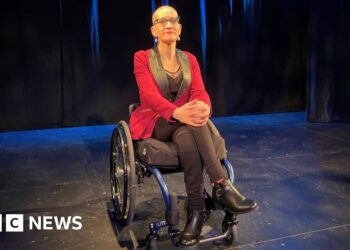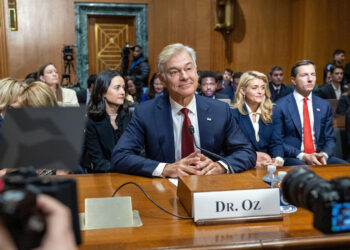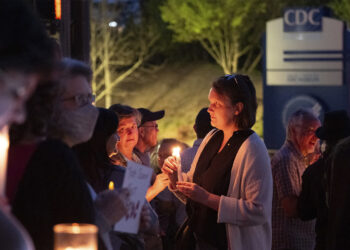In the medical field, the term “resilience” routinely makes the rounds. Psychologists define it as the process of successfully adapting to adversity and emerging even stronger than before. When applied to the practice of medicine, the general idea is that the more resilient someone is, the less likely they are to experience one of the most urgent issues in healthcare: Burnout.
Everyone in medicine wants to think they can handle it all. Everyone tries.
Resilience training programs, offered by many institutions, aim to provide healthcare workers with the tools to better face and grow from the daily adverse experiences they encounter, thus protecting them from burnout.
It all sounds simple in theory. Reality is far more complicated.
What if Innate Resilience Isn’t Enough?
Some argue that healthcare workers are already a fairly resilient group. Alex Yahanda, MD, and PGY4 neurosurgery resident at Washington University in St. Louis, St. Louis, describes how the medical profession self-selects for resilient people.

“Like everyone says, med school is like drinking from a firehose,” Yahanda said, and the demands only grow with clinical rotations and residency. “I think it’s tough to take someone who is not inherently resilient and throw them into a high-stress residency situation and then hope that they will develop it. Once you hit the ground running, there’s very little time to develop those skills.”
Yahanda’s belief is supported by a 2020 national survey study published in JAMA that found levels of resilience were greater among physicians than the general working population. Across specialties, resilience scores were highest in emergency medicine, neurosurgery, and preventive and occupational medicine.
But the connection between resilience and burnout prevention didn’t emerge. The study concluded that while higher levels of resilience might protect against burnout to a degree, even the most resilient physicians are at substantial risk. This tracks, considering the highest percentage of physician burnout has been found in emergency medicine, 62%, according to a large American Medical Association (AMA) survey from 2023.
Nicole Collins-Clagett, RN, The Johns Hopkins Hospital, Baltimore, and author of Ascending in Scrubs: How Nurses Triumph Over Burnout to Manifest Their Dreams, said that the idea of resilience is built into nursing training. The skills, however, are not.

“Administration anticipates that as healthcare professionals, we know what to do, which isn’t true,” she said. “We’re taught that the profession is difficult and demanding, so you will have to learn ways to cope with that. You can tell people to ‘cope’ all day, but if you don’t give them the tools to ‘cope,’ it leads to serious burnout issues, and people leave the profession.”
A ‘Deal With It’ Attitude Only Makes Healthcare Workers Angrier
Wellness and resilience programs can cause frustration in medicine, as some see them as hospitals shirking their role in employee burnout rates. Psychiatrist Linda Drozdowicz, MD, goes so far as to refer to this as a “very muted and unintentional form of victim blaming.” She writes, “The focus on training physicians to be more ‘well’ in an increasingly difficult and toxic health care system is akin to telling a domestic violence victim to take better care of him- or herself to better tolerate the abuse.”
Emergency medicine physician Michael Lipscomb, MD, chief quality and patient safety officer at ApolloMD, understands the pushback. “Doctors get mad when they hear ‘resilience’ and ‘mindfulness’ because it feels like someone is saying it’s a clinician’s problem,” he explained.

Although a proponent of resilience training, Lipscomb sees many physicians struggling with the same lack of resources they faced during COVID-19. “In the wake of COVID, we are asked to see patients in the waiting room, hallways, and everywhere other than a ‘normal bed’ without the needed help or resources to manage the volume,” he said. “How is mindfulness and resilience going to help that? It’s as if they’re saying, ‘Deal with it.’”
Should institutions be the ones to “deal with it?” Studies show that when it comes to the causes of burnout, external factors — administrative constraints, lack of resources, increasing responsibility, poor internal communication, etc. — far exceed the number of internal ones, like perfectionism or a strong need for recognition.
In the absence of systemic change, some say administrative gestures can be downright insulting. In a Los Angeles Times op-ed, Jillian Horton, MD, author of We Are All Perfectly Fine: A Memoir of Love, Medicine and Healing, recalls one such time during her residency. While she and her fellow residents were putting in 80-hour work weeks, the hospital gave them complimentary muffins to show their appreciation.
“I was angry because I didn’t need a muffin,” Horton wrote. “I needed years’ worth of good sleep…I needed a vacation. I was so burned out and depressed; I should have been seeing a psychiatrist. I was deep, deep inside a black hole, and instead of a rope and a flashlight, somebody had offered me a muffin.”
From this experience, Horton coined the term “muffin rage” to describe what we feel when there is a vast chasm between our actual needs and what another person or institution thinks we need.
“The problem isn’t the individual; the problem is the environment,” said Christine Sinsky, MD, vice president of Professional Satisfaction at the AMA, in an interview on the PermanenteDocs Chat podcast. “I often say that while burnout manifests in individuals, it originates in systems.”
Embrace What You Can Control and Do
“Yes, hospitals need to make the EMR systems streamlined. They need to make the ED not a cesspool of backup,” Lipscomb said. “But doctors need to help themselves as well. If you don’t have this resilience or mindfulness, you’re going to fail.”
Lipscomb learned about his own resilience shortcomings after a chance encounter in 2018 with a former burned-out physician who recommended a 3-day “lockdown” resilience and mindfulness course through OneTeam, which, he said, had given him important tools to cope. Lipscomb signed up.
“It was very eye-opening that I was just learning this stuff for the first time,” he said. “I wish somebody had taught me this earlier.”
What did he learn? Mostly it was about discovering weaknesses he didn’t even know he had. Example: Personal awareness exercises showing “we aren’t as engaged as we think we are” in specific situations and simple changes to routine interactions with patients and colleagues can make impactful differences.
Lipscomb says the course showed him how to be present in the moment, focused on the patient in front of him, rather than ruminating on what happened earlier or looking toward potential problems in the future.
“When I walk into a new room, I take a deep breath and reset and do the best thing I can for this patient,” he said. “You still fall into traps, but with training, you are quicker to realize when you are ‘checking out’ and can redirect back to the moment. You learn to see the trap and get out of it.”
“Is everything perfect? Of course not,” he said. “In fact, little around me has changed. But I was amazed how understanding myself better made these shortcomings affect me in a less negative way. I was really the only variable that changed, and it made a big difference.”
A good question to ask is: Am I using all the resources I have, no matter how basic? Sinsky co-authored a 2024 study showing that regardless of the workplace culture, the vast majority of physicians don’t take all of the vacation allotted to them, and when they do, most take work with them.
In her book, Collins-Clagett reminds nurses that they can always leave a toxic workplace. “As a career, you have multiple avenues to advance and to find your happy place,” she said. “And that’s what nurses have to find. And if they keep that in the back of their heads, they become more resilient.”
The Three-Legged Stool and What Hospitals Are Doing
Lipscomb points to a 2017 study, co-authored by Sinsky and published in The New England Journal of Medicine, that describes physician well-being as a three-legged stool. Two of the legs are reciprocity of practice efficiency and a culture of wellness. These are the responsibilities of the institution.
The third leg, personal resilience, is the responsibility of the physician. While hospitals are increasingly offering physicians elective resilience training and wellness programs, without the other two legs, the study suggests, the stool will topple.
Some hospital systems are making significant strides toward owning their part of the burnout problem. For example, Lipscomb notes that his hospital has incorporated artificial intelligence scribes for patient interactions, which he says has significantly decreased his stress.
Before the pandemic, Hawaii Pacific Health launched a program called “Getting Rid of Stupid Stuff.” They asked all employees to nominate anything in the electronic health record that was “poorly designed, unnecessary, or just plain stupid” in order to increase efficiency. Then, they followed through with changes based on those suggestions.
Perhaps most notably, the National Institute for Occupational Safety and Health partnered with Dr. Lorna Breen Heroes’ Foundation to design the Impact Wellbeing Guide: Taking Action to Improve Health Worker Wellbeing. This comprehensive guide helps hospital leaders and executives “accelerate or supplement professional well-being work” by making systems-level changes and building trust between leaders and healthcare workers — solidifying two of three legs of the “physician well-being stool.”
Teaching What They Don’t Teach in Med School
After going through burnout himself, hospitalist Christophe Gimmler, MD, LMFT, began training as a psychotherapist. He realized that the conceptual frameworks, skill sets, and integrated approaches he was learning would’ve been extremely helpful in preventing his experience. “I was thinking, ‘Why did they not teach me this in medical school or residency?’” he recalled.

Gimmler partnered with a psychiatrist and conducted about 2 dozen focus groups with residents to determine the issues they were struggling with while also noting the problems of physicians he was seeing in therapy. He saw an obvious need for systems change, but he also believed the available resilience training models could be improved.
So, Gimmler got to work. He enlisted the help of his colleague, Matthew Cordova, PhD, to create a developmental model of physician training, which was published in the Mayo Clinic Proceedings in 2020. In short, it’s a “toolbox” for physicians to develop intrapersonal and interpersonal skills that will help them cope with the emotional, social, and physical impact of working in medicine.

Some of these tools include learning to discern and manage triggered emotional episodes, setting healthy interprofessional boundaries, and de-escalating disruptive behavior in patients. It’s a career-long model to be introduced early in undergraduate medical training, extended into graduate medical education, and integrated throughout one’s career.
“Sometimes we assume that people already have these tools in place, but for most of us, these are things that develop over a lifetime of working on them,” Cordova said. “What I like about this model is that it layers in step-by-step building blocks and follows [physicians] forward in their career.”
Leading Change From Within
Gimmler also founded Resilience in Healthcare (RIH), a consulting organization that provides healthcare systems with a tailored curriculum. His team at RIH includes Cordova and Teja Patil, MD, MPH, a hospitalist and associate program director for Stanford’s Internal Medicine Residency Program.
One of the most important elements has been what Cordova calls, “a combination of professional credibility.” When you have “a psychologist and a physician teaching physicians, or a psychologist and a physician teaching psychology graduate students, people can think, ‘OK, you understand the messy details of our jobs and our professional lives.’ It reduces pushback.”
Cordova is clear that, “it’s not clinicians’ job to fix the system.” But he believes training individuals could have a systemic impact. “When people are aware of what they’re feeling and thinking and how their bodies are responding, and when they’re able to develop strategies and skills for communicating, they may be more effective at pushing back in unhealthy systems,” he explained. While resilience may start with the individual, perhaps its cumulative effects could change healthcare as a whole.
Source link : https://www.medscape.com/viewarticle/why-resilience-can-be-loaded-term-healthcare-workers-2025a10000oe?src=rss
Author :
Publish date : 2025-01-13 09:55:23
Copyright for syndicated content belongs to the linked Source.














